30th September 2022
Experimentation And Dialogues
This Module consists of a mixture of Contextual Work and a Final Year Project.
Brief Encounter
Alice sat us down and we had a discussion of the Assignment Brief.
First assignment is review of an exhibition and the formative submission date is 2nd December, this will allow a quick review and improvement opportunities before the second piece of work is started.
I was a bit gutted at this too as Alice said that the exhibition had to be seen in this academic year, as I’ve been to the Vivian Maier, Helen Levitt as well as others at Ikon Gallery, Wolves Art Gallery & Museum, Shrewsbury Museum and Art Gallery.
Oh well, I guess that I just need to find some more excellent exhibitions to visit. The point was made that it didn’t need to be a photography exhibition, art, paintings, sculpture and anything else can be a valid subject for the exhibition review.
Scarily the Final submission date of work in this module is 2pm on the 9th May 2023 which seems eons away but I’m sure it will soon come around.
For the contextual parts Alice will guide and support.
Word Counts: Exhibition Review should be 750 words which translates as +/- 10%
The essay needs to be 1500-2000 max. Therefore there is no +10 on the top.
These are strictly adhered to by the university.
The Final Year Project Body of Work needed will be based upon the where the work takes me. The support from Niki is for practical skills and help with ideas in the tutorial sessions.
Learning Outcome Discussions:
L01: Make
Develop speculative and reflective approaches to material experimentation and processes.
5 Minute chat with Noah, Emily, Codey to discuss “How do you think you can showcase your work in this?”
Bibliography of research, Evidence of experiments, a history of tests performed, a diary to document it all in, YouTube videos, contact sheets, interviews, plans of shoots and steps of processing images.
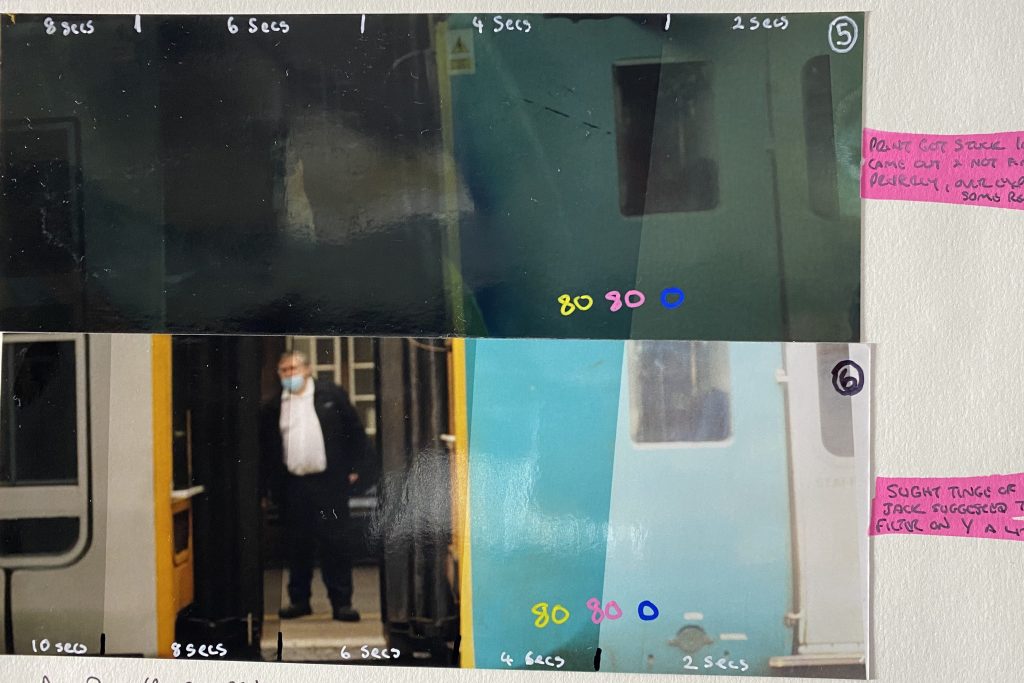
L02: Research
Respond to contemporary and historical cultural contexts and show curiosity to develop personally focussed research.
How would we showcase?
Public discussions, documentary films, books, recreating photographs in style of others to learn methods, news articles from historical and contemporary reviews of work and exhibitions.

L03: Communicate
Document and communicate with others about how your ideas have evolved and explain your decision making in support of project outcomes.
Sketchbook, Journal, Comms with tutor and everything needs to be documented. An assessor coming in to review work blind has no idea of your intentions or history so everything you do needs to be spelled out as if for someone with no knowledge.

L04: Reflect
Reflect and evaluate your own performance and that of your peer group in relation to appropriate contextual references.
Regular reflection on what’s happened in the processes you’re using.
Formal evaluations at mid point and the end.
Make notes of conversations with people that have a bearing on the project.
Try to see if collaborations are possible, learn off each other and offer teach back to see if it makes sense.
Be aware of each others’ work, talk about ideas and flesh out ideas with peers.
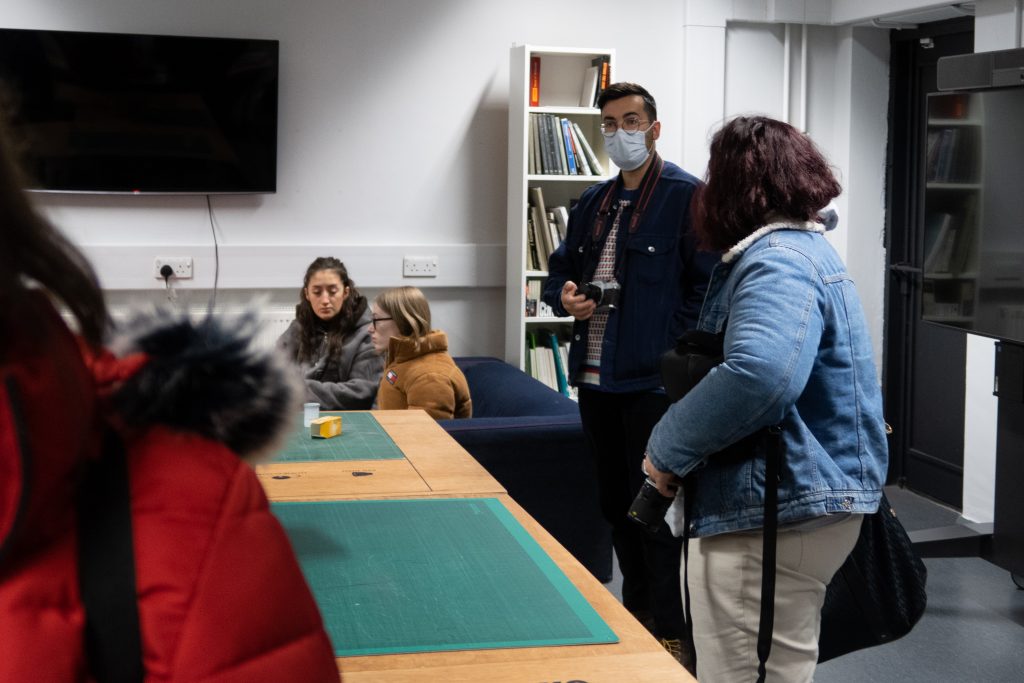
L05: Engage
Manage your time and studies effectively and demonstrate a positive attitude to studentship through attendance and engagement in taught sessions and independent practice.
Positive Attitude and being a good student.
Engagement in seminars, meetings, workshops.
Asking questions and offering opinions when requested.
Attendance must be 80% or greater.

Academic Year Schedule
Talk of schedule which will be posted on the Canvas tool for us.
Some excitement from students about Week 4 Trip to Liverpool, with an obvious Liverpool fan getting a bit vocal with his terrace singing in the room.
On the schedule I noticed a Key Text later in the year, Camera Lucida. Looks like this is another Roland Barthes book, just bought for £4.50 off eBay. Barthes is the author of Mythologies that we were recommended to read last year also.
Personal Expectations From The Module:
- Understanding Language Of Art
- Harvard Referencing
- Broaden Horizons of Photography
- Pointers to Practitioners to look into based on own work.
Reading List:
- The contemporary picturesque – Norman, Nils.Kalmár, Stefan.London 2000
- Ruins – Dillon, Brian,London 2011
- Pictures from home – Sultan, Larry,[London] :Mack 2017
- Perspectives on place : theory and practice in landscape photography – Alexander,Abingdon, Oxon 2015.
- outland – Ballen, Roger, 2015
- Land matters: landscape photography, culture and identity – Wells, Liz,2011.
- Inside information : photographs 1988-1955 – Seawright, Paul, 1995.
- Experimental photography : a handbook of techniques – Antonini, Marco,Minniti, Sergio,; Gomez, Francisco,; Lungarella, Gabriele,; Bendandi, 2015]
- From Snapshots to Social Media – The Changing Picture of Domestic Photography – Sarvas, Risto.Frohlich, David M.London :2011
- Family snaps : the meanings of domestic photography -Spence, Jo.; Holland, Patricia 1991.
Books in bold were called out by Alice as particular works to look at.
Lunchtime & Beyond
We looked at a Key Text: The Photographer’s Eye by John Szarkowski
Alice asked “How much control does a photographer have over the way the images are interpreted”
I originally said “none” as I figured that viewers with all manner of life experiences will possibly see the work so they could see anything relevant in the photo that triggers something.
However, it is more that the photographer can use a toolbox of techniques to guide or direct or maybe even manipulate the viewer into an opinion.
Szarkowksi writes of five “tools” that can be used.
- The Thing Itself
- The Detail
- The Frame
- Time
- Vantage Point
Vantage Point
To discuss Vantage Point we examined a photo by Harry Callahan called Heroic Figure from 1961
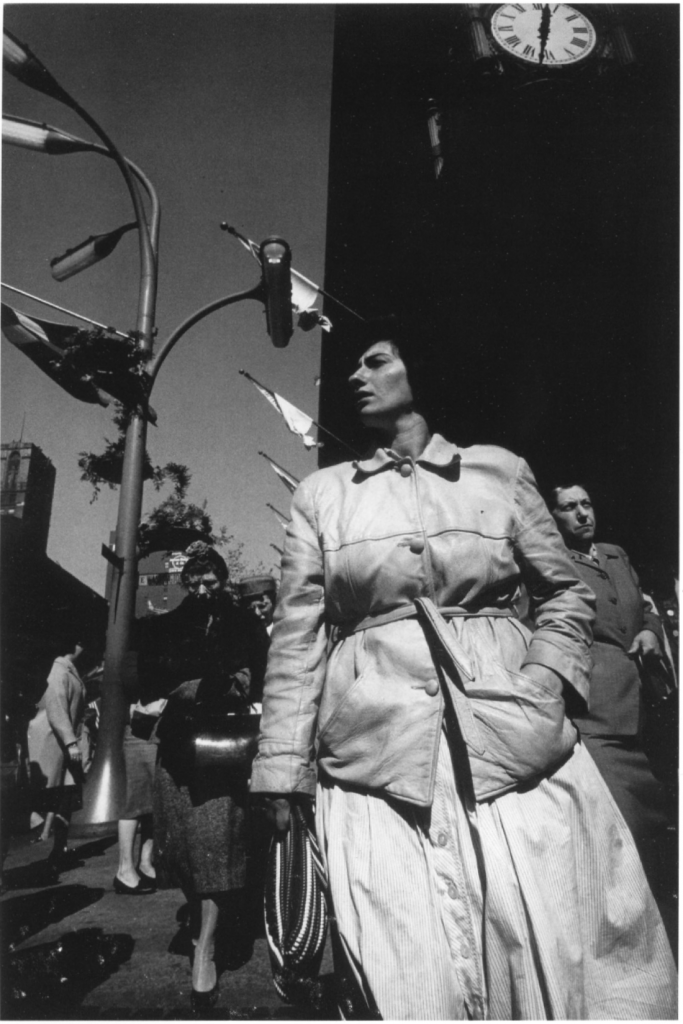
We discussed how the image was made of the subject from low down, as if looking up at a statue or a monument of someone “great”
Words like Power, Strength, Control, Imposing were used to describe the woman.
It was 1961 so this might be early in this woman’s working life after women were freed from being housewives only. She may have been on her lunch break from work in a city or town.
The clock is in the image as if to tell us that it is dinner time might be the reason for her being out on the street.
I thought it looked as though the images was taken at a child’s eye height almost as if the woman is a motherly figure also.
The Thing Itself
We then discussed “The Thing Itself” and looked at a photo by an unknown photographer called “Bedroom Interior” from c.1910
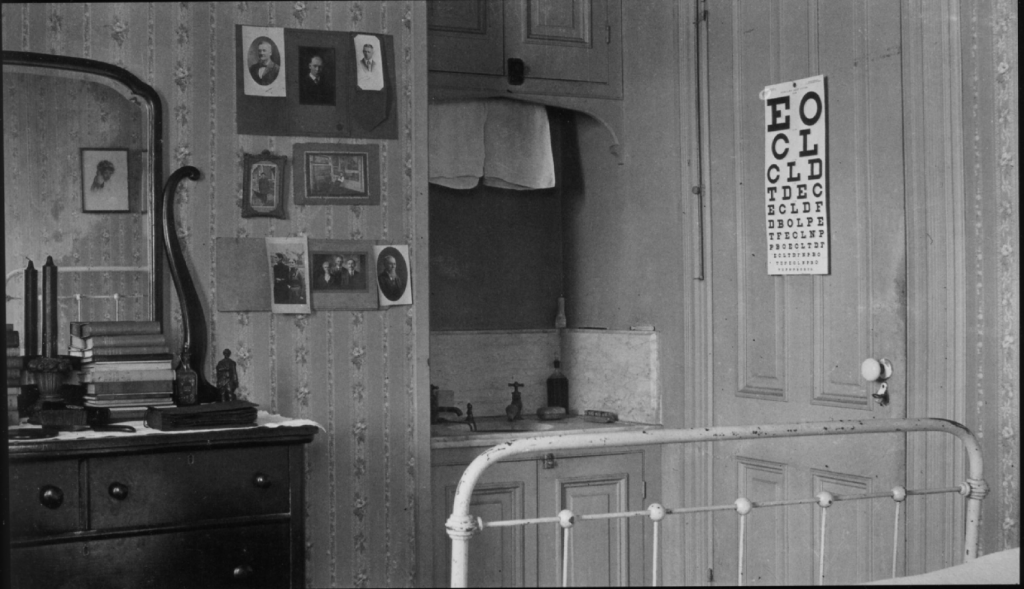
This was an interesting image to us and we each had varied ideas about whose room this was, what their profession may have been etc.
The obvious feature is an eye test chart on the rear of the door making you think of an optician, a medical student or even someone with eyesight problems tracking their decline.
The white garment over the sink looked like boxer shorts, towels and bloomers depending on who spoke. The sink underneath has limited products next to it so it looks more masculine.
The photos on the wall appear to be of mainly men, in formal dress, possibly family or inspirations for the room owner.
I noticed a picture in the mirror reflection that is above the head of the bed, I thought it looked a little religious but others also thought it could be a sweethearts picture.
The bed and door are both grubby and paint flaking as though the room occupier is renting and not worried about keeping the furniture maintained. The marks on the door and also the internal lock to prevent people coming in make it look as though it could be in a shared property, like a rented room, apartment or even student accommodation.
There are books and what looks like a photograph album on the dresser which would hint at a student or professional person living there also.
Frame
The next Szarkowski section was “Frame” and for this, Alice presented us with an image of a door. She asked us to look for clues as to why the picture was taken and why, before she revealed the title “Church Door, Hornitos, 1940” by Edward Weston.

After much talk of the locks, replacement of the locks, the tired and dried out wood and whether it was a building lacking investment Alice asked us if there were any other shapes in the image apart from rectangles. Gin noticed that the centre of the door contained a cross, then we noticed it was white painted and then it became obvious that it was a church.
Alice pointed out that Weston could have been making a point of the fact that churches are all welcoming, always open buildings and yet this one is closed and locked securely..
This mystery and requirement to carefully read the image comes from Weston framing just the parts of the building he wanted to so that you have to work it out.
Detail
Detail was the next part and for this we discussed Gary Winogrand’s untitled image of a zookeeper feeding an elephant from 1962 series “The Animals”

The first thing I noticed in the image was the power dynamic of the human dropping food to the animal. Kyle noticed that the wall, albeit out of focus, is a divider between the animal and person. Alice mentioned that the wall is out of focus due to the photographer making a choice to do so ensuring that the viewers eye is drawn to the trunk and arm.
The detail is in the trunk and arm but is not stretched out to either side so this could remove the individuality of both person and elephant, and implying that all humans treat all animals this way and that the animals in these facilities totally depend on humans for survival.
Time
The last of Szarkowski’s techniques is Time and Alice showed us an image by Otto Steinert named A Pedestrian In Paris, 1951.
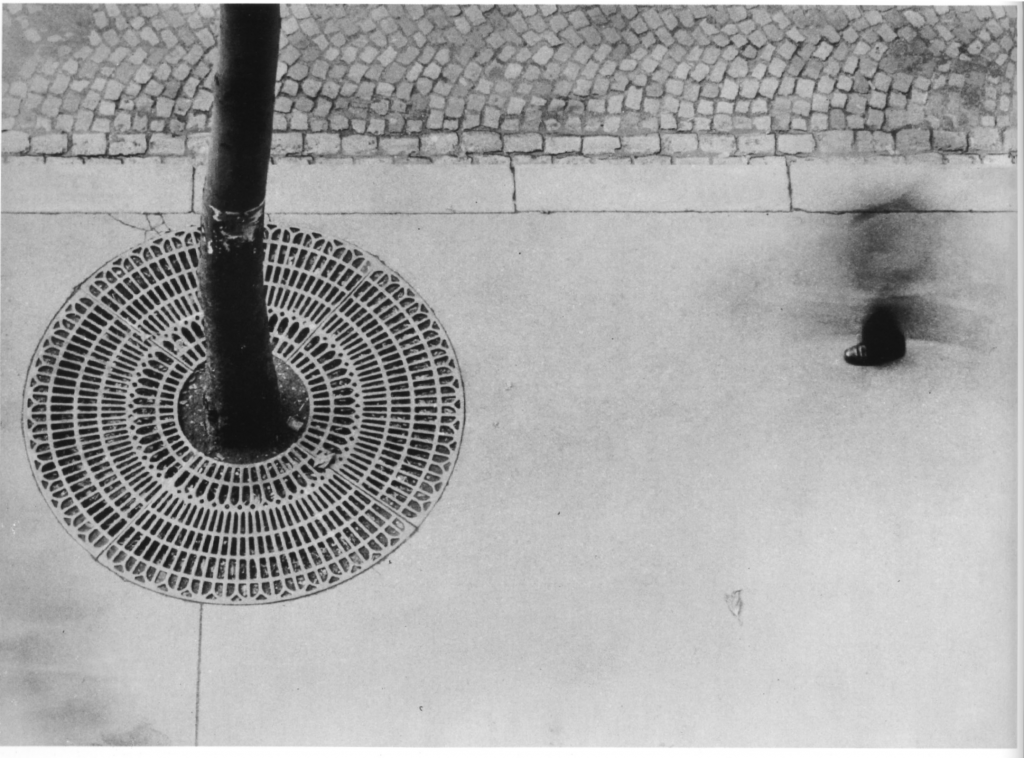
This image shows the use of time in the explanation of a person moving along the footpath whilst the tree appears motionless. This isn’t strictly true though, the tree is also moving and growing, on a slightly longer timeline though.
The grates around the base of the tree were interpreted as tree rings, indicating the growth of trees and that this particular tree may have hundreds of years to grow, whilst the man in the image will be long gone by then.
The blurred image of the man is achieved by using a long enough shutter speed that it doesn’t freeze his motion.
TASK:
We were then given a Task to Select One Of The 5 Approaches, take five photos to represent it and then upload to Padlet before next Friday. We are to upload without explaining which technique we’re referencing as a way of checking whether everyone is agreeing on the type of image it is.
See next post to see what ideas or shoots I did for this.
Meet My Academic Coach
After the seminar finished I waited in the basement by the radiator until it was time to head to the foyer for my Academic Coaching Session With Lauren.
Lauren asked if I’d learned anything last year and I replied with the fact that I now think of myself as an artist/creative. Without wanting to sound pretentious or knobish I figured that I’ve always been creative and willing to experience different ways of making things and some of it is very obviously art, see my painted Batman pictures and ED209 monster cosplay for more information. I had never considered myself as an artist of any sort before so I think that’s what I picked up from first year. Confidence that I’m not an impostor and anything I make may be valuable in it’s own way, much the same as any other artist.
I mentioned a research paper that we’d been told about last week, whereby creativity is high in young children but by the age of twenty the average creativity is all but lost as we go into the ruts and general everyday habits of life. Lauren suggested that I look at Ted Talks featuring Ken Robinson for more information on how creativity is lost and grown again..
Goals
She asked what my short and long term goals were and for me, the short term is to get a grip on Academic Writing and structuring work to sound critical and logical using the correct language and vocabulary.
For the longer term goal I thought that I’d like to understand what “my practice” looks like. I know I take photos and do other things, but is there a consistent theme or thread that goes through my methods or subjects? Hopefully this year will help me to understand what my practice might be.
We discussed the support I might need from her this year, but I’m usually quite self sufficient and normally don’t have any difficulties asking questions of anyone. I explained that this is a side effect of being forced to attend college in my apprenticeship back in the 90’s. When I didn’t bother to clarify things I didn’t understand it led to me not getting the results I knew I was capable of. It also irked me that I had another year of apprentice wages whilst my friends were moved onto skilled man’s wages as they’d passed their college courses. This focussed my mind and I realised that I’m the main person who can direct my development and if I need help just to ask for it, Being more engaged in the classes led to a much better relationship with my tutors at the time also.
Some of the younger people on my course may be finding it difficult to put themselves out to ask a question through shyness, anxiety or any number of reasons, but they can help themselves by engaging with the group and lecturers more freely. This will come with time and I’m looking forward to seeing them grow in confidence.
[…] what I’d set as a goal in our first meeting of this academic year. It is mentioned in an earlier post but I’d forgotten that I’d written it down there. The short term goal was to pick up […]